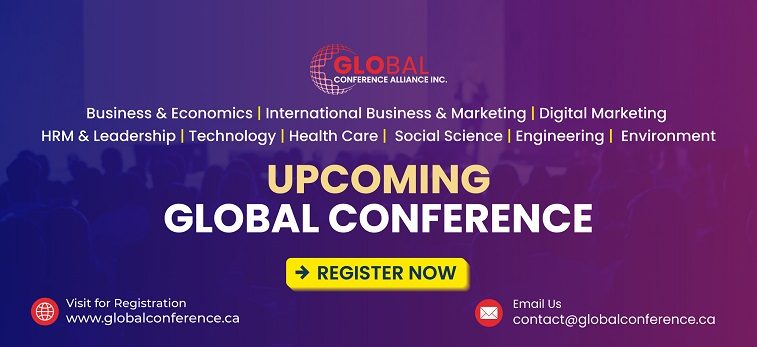Conferences have become more than scheduled events; they are platforms where ideas meet people and people create opportunities. For organizations, these gatherings are often the spark for growth, innovation, and connections that can last well beyond the closing session of the event.
So, what are the Benefits of Conferences for Organizations? In simple terms, they provide the chance to connect with industry leaders, strengthen brand visibility, and gain insights that improve strategies. These benefits combine to create real value that helps organizations grow stronger and smarter.
From trusted networking to learning the latest industry shifts, conferences deliver something unique that webinars or ads cannot replace. If you want to discover how these events can shape your organization’s success, keep reading to uncover the complete list of benefits.
What are the Benefits of Conferences for Organizations?
Conferences are not just events on a calendar; they are growth platforms that deliver measurable value. From making strong connections to gathering new industry knowledge, these gatherings give organizations unique opportunities that directly impact performance, reputation, and long-term success.
Networking Opportunities
Conferences gather people you might never reach through emails or phone calls. Face-to-face conversations build stronger connections, opening doors to future collaborations or partnerships. In fact, 82% of professionals say networking at live events creates more valuable and lasting business relationships compared to digital communication.
Knowledge Sharing & Learning
Every conference is like an intensive classroom for organizations. Teams learn from experts, panels, and workshops, gaining insights they can apply right away. Research shows 65% of attendees take home ideas they implement immediately, improving problem-solving and strengthening decision-making in their organizations.
Brand Visibility & Thought Leadership
Standing on stage, hosting a booth, or sharing research positions an organization as an authority. Visibility at these events helps organizations become recognizable and trusted. Reports indicate brands presenting at conferences experience a 34% boost in industry recognition, building credibility that goes beyond the event itself.
Access to Latest Industry Insights
Conferences often reveal what’s new before it becomes mainstream, whether it’s regulatory changes, fresh technologies, or market shifts. 70% of executives say they first hear about new solutions at industry events, proving these gatherings are crucial for staying ahead of competitors and adapting strategies early.
Employee Development & Retention
Organizations that send employees to conferences invest directly in growth and motivation. Attendees return with new skills and energy to share with peers. Deloitte found that companies offering learning opportunities see up to 50% higher retention rates, as employees feel valued and more committed to their workplace.
Partnerships & Collaboration
Conferences create opportunities for joint projects that might never start otherwise. From co-marketing to research alliances, collaborations formed in these settings can be revolutionary. According to the Freeman Trust Report, over 40% of businesses form new partnerships at conferences, unlocking new markets and shared capabilities.
Competitive Intelligence
Walking expo floors or attending competitor sessions provides a rare chance to observe strategies in action. Organizations can assess rival products, pricing, and customer engagement firsthand. This competitive intelligence sharpens future decisions, helping businesses adjust plans and maintain an edge in crowded markets.
Lead Generation & Sales Growth
Conferences are also strong sales engines. Engaging with the right audience face-to-face produces highly qualified leads that convert faster. Freeman’s research shows 65% of marketers consider in-person events their highest-ROI channel, proving conferences directly influence revenue and long-term pipeline growth for organizations.
Cultural & Brand Trust Building
Meeting people in real life makes organizations feel more authentic. Employees, leaders, and brands gain credibility by showing up. According to the Freeman Trust Report, in-person experiences significantly lift brand trust, helping organizations strengthen their reputation and deepen loyalty within their industry and community.
These benefits prove that conferences are not just gatherings; they are engines of organizational growth. Whether it’s global summits or international conferences in Canada, the USA, or the UK, the value remains the same: stronger teams, better strategies, and measurable results that last well beyond the event itself.
What’s the Core Purpose of an Organization Attending Conferences?
Every organization has its reasons for stepping into a conference hall, and the broader purpose of conferences is to connect people, ideas, and opportunities that can transform business strategies. These events serve as gathering points where people, ideas, and opportunities align in ways that can shape the future of a company. Let’s look at the main purposes behind attending.
- Networking with Intention: Rather than casual meet-and-greets, conferences let organizations target conversations with people who truly matter, potential partners, clients, and respected leaders. It’s about creating meaningful introductions that can lead to stronger professional circles and long-term opportunities.
- Smarter Decision-making: Leaders use conferences to compare perspectives, hear expert debates, and pick up on trends that impact their industry. These fresh inputs often shape strategies and help organizations make decisions with more confidence and less guesswork.
- Sharpening Skills: Conferences often pack in practical sessions, workshops, and panel discussions. Employees walk away with fresh methods, tools, or ideas they can apply immediately, keeping the organization agile and ready to handle changing market demands.
- Building Visibility: For many organizations, being seen at the right events is as important as attending them. Speaking on stage, presenting new research, or even active participation, helps boost visibility and strengthen reputation within the field.
At its core, attending a conference is about showing up with purpose, meeting people, learning actively, making smarter choices, and being recognized. Once these goals are clear, the benefits flow naturally.
Types of Conferences Perfect for Organizations
Not all conferences serve the same purpose, and knowing which type matches your goals helps maximize the value. Each format offers something unique, whether it’s deeper knowledge, stronger relationships, or direct customer engagement. Let’s look at the four main types of conferences organizers should consider:
Industry-specific Conferences
These conferences focus tightly on a single sector, offering in-depth discussions on trends, regulations, and future challenges. They are ideal for organizations aiming to strengthen their market knowledge and build credibility among peers. Attending helps leaders connect with top professionals who truly understand their industry landscape.
Academic and Research Conferences
Academic gatherings highlight advanced research, new discoveries, and bold ideas that shape future innovation. Organizations tied to research and development benefit most here, gaining insights that may never appear in mainstream channels. Engaging with scholars and experts keeps companies close to breakthroughs while building intellectual credibility.
Trade Shows and Expositions
Trade shows combine exhibition space with networking, giving organizations a stage to present products, test new ideas, and interact directly with potential customers. They also provide valuable competitor insights. For many, these events spark new leads, brand recognition, and direct feedback that form upcoming product or service strategies.
Professional Development Conferences
Focused on people rather than products, these conferences provide learning sessions, workshops, and skill-building activities. They are perfect for organizations investing in long-term employee growth. Staff return with stronger confidence and new skills, while the company gains a more capable, motivated workforce ready to tackle evolving challenges.
Choosing the right type depends on your organizational goals, whether that’s deepening expertise, boosting visibility, or growing your team. Use a decision matrix to weigh costs, audience fit, and potential ROI so that every conference you attend leads to meaningful results. A well-structured planning timeline for organizing a conference also ensures smooth execution and better outcomes, reminding us of the real importance of conferences in driving both immediate and long-term results.
Conferences vs Webinars vs Digital Ads
Organizations can connect with their audience in different ways, but each format brings a unique flavor and outcome. Conferences, webinars, and digital ads all serve important purposes, and understanding their role helps you decide where to put your time and resources.
| Format | Definition |
| Conferences | In-person events where professionals gather to network, learn, and share industry insights. |
| Webinars | Online seminars or presentations hosted virtually for education, training, or awareness. |
| Digital Ads | Paid online placements designed to attract attention, generate clicks, or build awareness. |
Strengths of Each Format
Conferences shine because they build personal trust and deliver high-quality leads. Webinars are strong for scaling knowledge-sharing at low cost, reaching global audiences instantly. Digital ads are powerful for targeting specific demographics, launching campaigns quickly, and tracking clicks or impressions with measurable data in real time.
Limitations of Each Format
Arranging conferences requires significant budgets for travel, booths, and planning, making them harder to attend frequently. Webinars, while inexpensive, often struggle with engagement and participant attention spans. Digital ads face ad fatigue, rising costs at scale, and limited relationship depth, which can weaken long-term brand credibility if overused without balance.
Unique Value for Organizations
The real difference lies in the type of connection. Conferences provide authentic, face-to-face trust and meaningful relationships that no online format can fully match. Webinars are best for education and nurturing existing prospects, while digital ads are effective for quick awareness campaigns, but rarely deliver the same quality of leads.
All three formats have their place, but the unmatched trust and lead quality highlight conference importance as a cornerstone of organizational growth. For the strongest strategy, organizations often combine them, using ads for reach, webinars for education, and conferences to seal relationships and generate long-term growth.
Risks and Quick Fixes
Conferences can be revolutionary for organizations, but without the right approach, they can also become expensive mistakes. Many teams repeat the same errors, measuring the wrong things, attending the wrong events, or forgetting follow-up entirely. The good news is these risks have simple, practical fixes that work.
Risk 1: Chasing Vanity KPIs
It’s tempting to celebrate numbers like booth visitors, badge scans, or social likes. They look impressive but rarely show true business impact.
Quick Fix: Track outcome-driven numbers like qualified leads, meetings booked, or deals added to the pipeline. Focus only on metrics that connect back to real organizational goals.
Risk 2: Choosing Wrong-Fit Events
Attending every conference possible often drains budgets without real returns. A poor-fit event may bring people, but not the people your organization truly needs.
Quick Fix: Use a simple decision matrix before committing. Score conferences by relevance, cost, expected ROI, and quality of attendees. This keeps investments aligned with strategy instead of guesswork.
Risk 3: Weak Pre-Event Planning
Walking into a conference without clear goals often leads to wasted time. Teams may drift between sessions, unsure of who to meet or what to achieve.
Quick Fix: Set clear objectives like “book 15 client meetings” or “demo product to 50 prospects.” Assign roles so every team member knows their tasks before the event starts.
Risk 4: Skipping Post-event Follow-up
Many great connections disappear simply because no one followed up after the event. Without a plan, opportunities fade within weeks.
Quick Fix: Create a 30-60-90 day follow-up plan. Send thank-you notes within the first week, schedule discovery calls within a month, and continue contact with valuable resources in the following months.
Risk 5: Overloading Employees
Conferences can be intense. If employees come back exhausted, they may not share knowledge or apply what they learned.
Quick Fix: Schedule a short debrief once the team returns. Let them share takeaways with colleagues, turning individual experiences into organizational learning while giving them space to recover.
Conferences aren’t risk-free, but the mistakes are avoidable. With these quick fixes, organizations can protect their investment, maximize outcomes, and ensure every conference organization delivers meaningful results. A successful conference organization always comes down to clear planning, smart execution, and consistent follow-up
Frequently Asked Questions
Conferences often spark curiosity beyond the obvious benefits. Many readers wonder about the finer details that can make their participation more valuable. Here are answers to some common questions organizations usually ask after considering conference participation.
How Early Should an Organization Register for a Conference?
It’s best to register at least three to six months before the event. Early registration often saves money and guarantees space for popular sessions. It also helps organizations plan travel and resources more effectively.
Should Organizations Always Aim for a Speaking Slot?
Speaking slots are valuable, but they are not always necessary. If the event directly matches your expertise, presenting can build strong credibility. Otherwise, networking and active participation may deliver equal value without the added pressure.
How Many Team Members Should Attend a Conference?
There’s no fixed number, but sending two to four representatives works well for most organizations. This allows coverage of different sessions and networking opportunities. A small but prepared team is often more effective than a large, unfocused group.
Are Virtual Conferences Worth Attending for Organizations?
Yes, virtual conferences are worth attending when travel isn’t possible. They are cost-effective and allow access to global audiences. However, they may lack the same depth of networking and trust-building found in in-person events.
How Can Organizations Track Conference Success?
Success can be tracked by setting clear goals before the event. Common measures include the number of qualified leads, partnerships initiated, or skills gained by employees. Comparing results against costs ensures the conference delivers meaningful value.
What Should Organizations Bring to a Conference?
Organizations should prepare business cards, marketing materials, and product demos if relevant. A clear elevator pitch is also essential. Simple preparation like this ensures every conversation creates a professional and lasting impression.
How Soon Should Follow-Up Begin After a Conference?
Follow-up should start within 48 hours after the event. A quick thank-you email or LinkedIn connection helps keep the conversation warm. Delaying follow-up risks losing interest or momentum from potential contacts.
Can Small Organizations Benefit as Much as Large Ones?
Absolutely, small organizations often benefit even more. Conferences give them visibility and direct access to decision-makers they might not meet otherwise. With the right strategy, smaller teams can stand out and build powerful connections.
Concluding Words
Strong results don’t just happen by attending an event; they come from clear goals, active participation, and meaningful follow-up. When done right, conferences turn into powerful tools that organizations can use to move forward.
So, what are the Benefits of Conferences for Organizations? The answer is clear: they offer authentic networking, trusted learning, brand credibility, and partnerships that leave a lasting impact. These aren’t short-term wins but long-term advantages that help businesses grow.
The real takeaway is simple: choose the right events, measure results wisely, and act quickly after meeting people. With these steps, organizations can turn every conference into an investment that pays off in growth, stronger teams, and smarter strategies.








